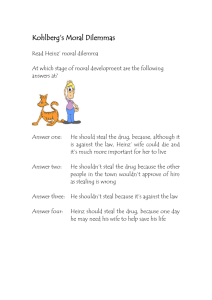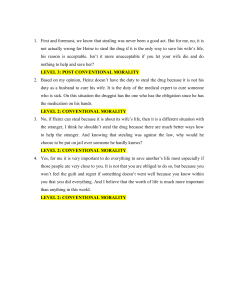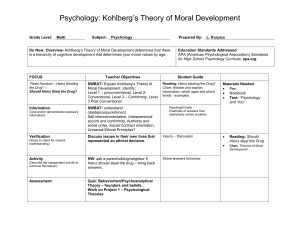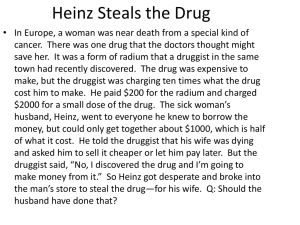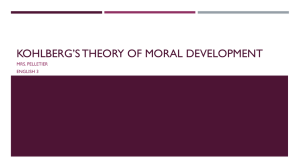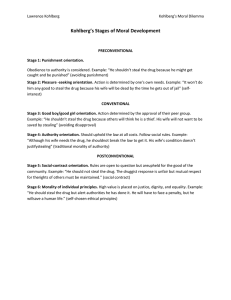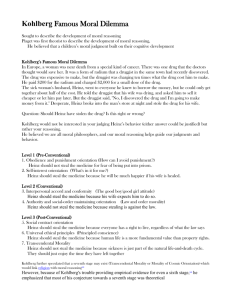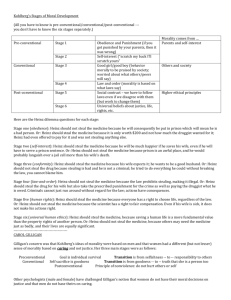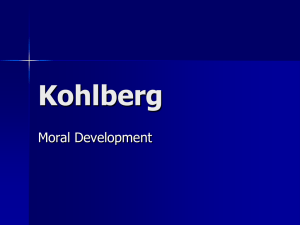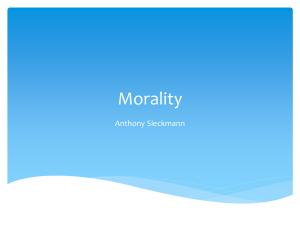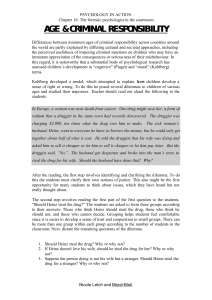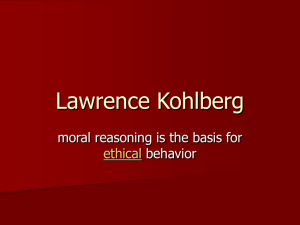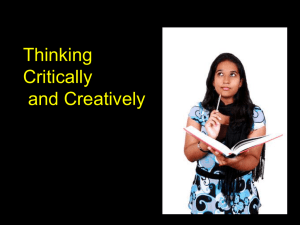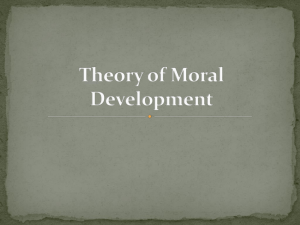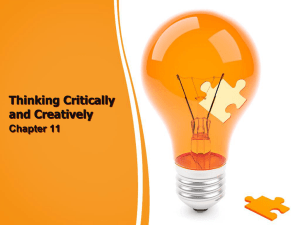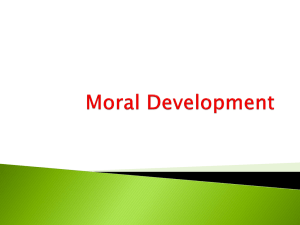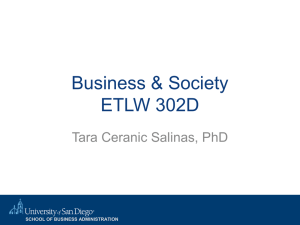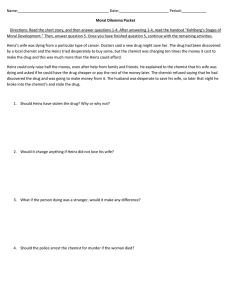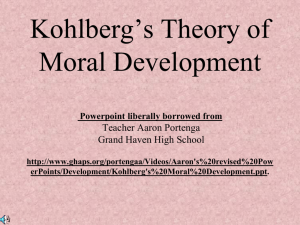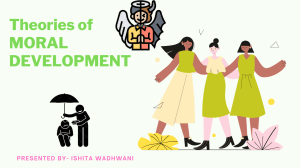Kohlberg's theory in table to fill in
advertisement
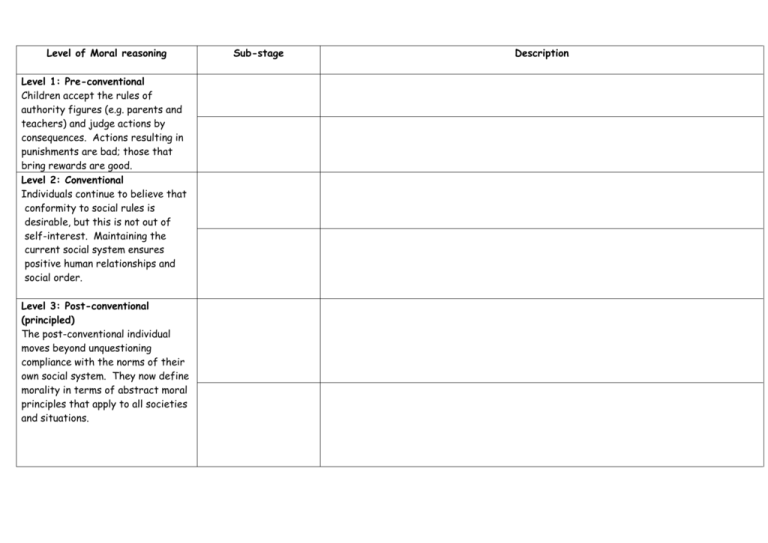
Level of Moral reasoning Level 1: Pre-conventional Children accept the rules of authority figures (e.g. parents and teachers) and judge actions by consequences. Actions resulting in punishments are bad; those that bring rewards are good. Level 2: Conventional Individuals continue to believe that conformity to social rules is desirable, but this is not out of self-interest. Maintaining the current social system ensures positive human relationships and social order. Level 3: Post-conventional (principled) The post-conventional individual moves beyond unquestioning compliance with the norms of their own social system. They now define morality in terms of abstract moral principles that apply to all societies and situations. Sub-stage Description Stage 1 Punishment and obedience orientation This style of morality ignores the intentions behind a behaviour and focuses on obeying rules that are enforced by punishment Stage 2 Individualism, instrumental purpose and exchange Children view actions as ‘right’ if they satisfy their own needs Stage 3 Mutual interpersonal expectations (the good boy/nice girl stage) This is a ‘good boy – good girl’ orientation. What is right/good is defined by what is expected by others. It is important to be seen to be good Stage 4 Law and order orientation or Social-order-maintaining orientation The rules and laws of society define morality in order to maintain social order. Individuals become more socially aware and community oriented, considering the possible effect of a behaviour on a wider society. Stage 5 Social contract orientation Laws are still seen as important: where they are seen as consistent with individual rights and the interests of the majority, they are upheld (to preserve social order), however there might be occasions when they can be changed or ignored. Some values are relative, while others (e.g. the sanctity of life) are not negotiable. Stage 6 Universal ethical principles The individual has developed their own principles of morality. Laws usually conform to these but where this is not the case, the individual acts in accordance with their moral principles. The individual takes into account the likely views of everyone who will be affected by a moral decision. THESE ARE NOT IN THE CORRECT ORDER – YOU NEED TO DECIDE WHICH STAGE THEY GO INTO (e.g. ‘Heinz shouldn’t steal the drug because he might get caught and sent to prison’) (e.g. ‘the pharmacist should recognise that the right to life is more important than property and all concerned ought to agree that the fairest outcome is that the wife should be given the drug’.) (e.g. Heinz should not steal the drug because he must obey the law which is designed to protect everyone) (e.g. ‘although there is a law against stealing, the law wasn’t meant to violate a person’s right to life’.) (e.g. ‘stealing is ok because Heinz had to do it to save his wife’) (e.g. ‘Heinz should steal the drug for his wife because it shows that he loves his wife.’ Or ‘Heinz should not steal the drug because his family will be ashamed of him.’)
